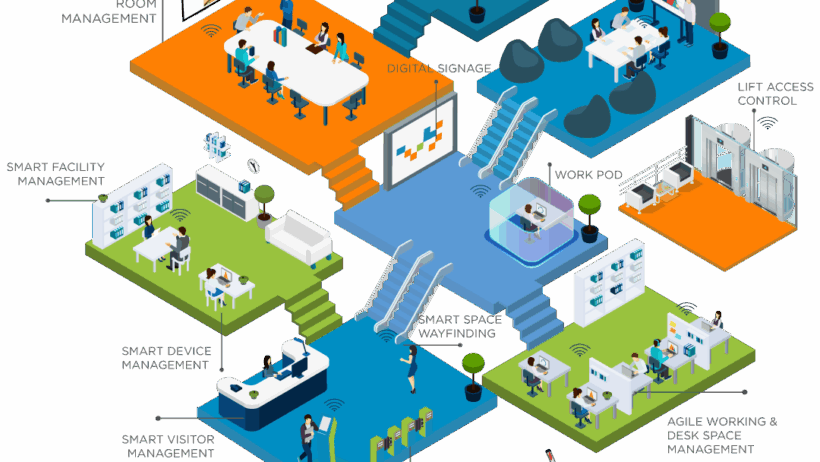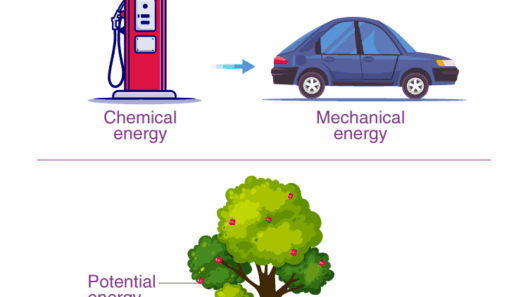In today’s fast-paced business environment, energy conservation is not merely a necessity but also a strategic imperative. As organizations around the globe grapple with the realities of climate change, the adoption of smart workplace solutions has emerged as a crucial avenue for conserving energy and resources. But have you ever asked yourself: how many resources does your office truly consume in a day? Or, more playfully, if your office were a person, would it be a glutton or a minimalist?
Addressing the challenges of resource consumption in an office setting can feel overwhelming. However, combining innovative technologies with enlightened practices can yield remarkable benefits for both the environment and the bottom line. Here’s an exhaustive overview of effective strategies to conserve energy and resources in an office.
1. Embrace Smart Technology
Utilizing smart technology can drastically reduce energy consumption in offices. Smart thermostats, for instance, adjust heating and cooling based on occupancy patterns, ensuring that energy is not wasted when rooms are unoccupied. Moreover, intelligent lighting systems that respond to natural daylight levels or motion detection can significantly lower electricity use. These innovations offer an elegant solution to an age-old problem: keeping the workplace comfortable without unnecessary energy expenditures.
2. Optimizing Natural Light
Harnessing natural light efficiently not only fosters a pleasant ambiance but also limits reliance on artificial lighting. Architectural designs that incorporate large windows and skylights can illuminate workspaces while providing substantial energy savings. Employees generally appreciate well-lit environments, which can spur creativity and enhance productivity. Additionally, utilizing light-colored walls and reflective surfaces can help distribute natural light effectively throughout the office.
3. Energy-Efficient Appliances
When it comes to office equipment, energy efficiency should be paramount. Opting for ENERGY STAR-rated devices can contribute significantly to reducing overall electricity consumption. Printers, copiers, and computers that meet these criteria use less energy in both active and standby modes. Implementing a policy to turn off devices not in use or engaging energy-supportive features, such as sleep mode, can further enhance resource conservation.
4. Promoting Remote Work
One of the most transformative practices to emerge in recent years is the option for remote work. By allowing employees to work from home, companies can reduce the energy consumed in office spaces. This practice not only lessens the demand for heating, cooling, and lighting in the workplace but also curtails commuting-related carbon emissions. When structured thoughtfully, remote work can create a win-win situation for both employees and employers.
5. Implementing Recycling and Waste Reduction Programs
The journey to conserving resources also encompasses a robust recycling program. Offices generate vast amounts of paper and electronic waste, which can significantly impact the environment if improperly disposed of. By instituting a comprehensive recycling initiative that includes paper, plastics, and electronics, offices can reduce landfill waste and promote a culture of sustainability. Additionally, adopting practices like double-sided printing and digital documentation can minimize paper use efficiently.
6. Water Conservation Techniques
Water is a precious resource, and its conservation in the office setting often goes overlooked. Simple interventions such as installing low-flow faucets and toilets can make a noteworthy difference. Furthermore, educating employees about the significance of turning off taps while washing hands can instill a sense of responsibility toward resource usage. Monitoring water consumption can lead to insights that help identify areas for further reduction.
7. Creating a Green Office Culture
Fostering a culture centered around environmental stewardship is vital for long-term energy and resource conservation. Employees should be encouraged to participate in sustainability initiatives, whether through regular meetings focused on energy efficiency, interactive workshops on eco-friendly practices, or challenges that promote mindful consumption. These actions can cultivate a sense of collective responsibility, turning energy conservation into a shared mission rather than an isolated task.
8. Green Office Plants
Integrating plants into office decor not only enhances aesthetics but also contributes to improved air quality and psychological well-being. Certain plants can filtrate pollutants and increase oxygen levels, creating a healthier workplace. This natural approach to office design fosters a connection with the environment while subtly reminding employees of the importance of sustainability.
9. Developing a Comprehensive Energy Audit
To assess the efficacy of energy conservation measures, conducting a comprehensive energy audit is paramount. This process involves analyzing energy usage patterns, identifying inefficiencies, and establishing benchmarks. By understanding where energy is being consumed, organizations can implement targeted strategies that yield the most significant impact on resource conservation. Regular audits can also ensure that practices evolve alongside new technologies and employee habits.
10. Collaboration with Green Vendors
Partnering with vendors who prioritize sustainability can further bolster an office’s commitment to conserving resources. Whether it’s sourcing materials from environmentally conscious suppliers or selecting cleaning products that are free from harmful chemicals, collaboration with green vendors is key to reinforcing your office’s sustainability goals. Cultivating these partnerships can lead to innovative solutions that enhance both functionality and eco-friendliness.
Whether through small incremental changes or sweeping systemic reforms, the path to conserving energy and resources in an office is an achievable endeavor that warrants immediate action. The benefits extend beyond saving costs; they positively impact the environment and foster a corporate culture rooted in sustainability. So, is your office ready to embrace the challenge of becoming an eco-friendly haven, or will it continue down the path of excessive consumption? The choice lies within each organization, and the time for action is now.






